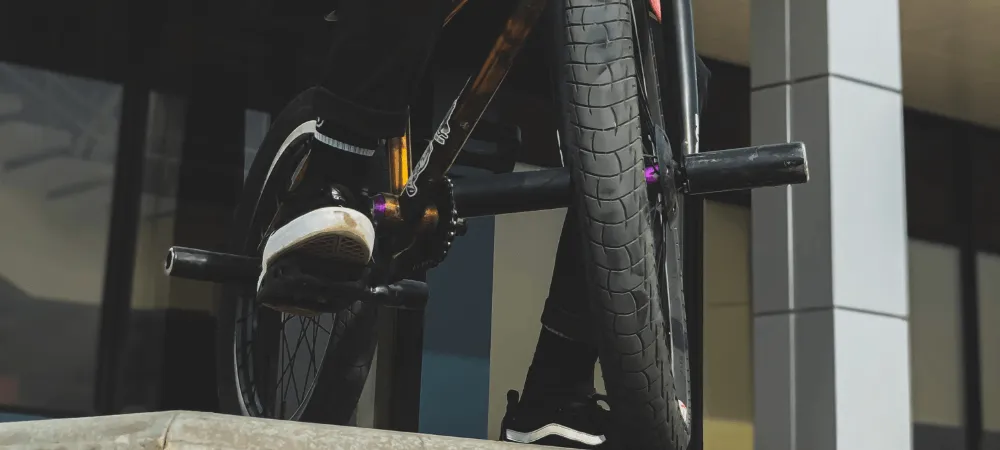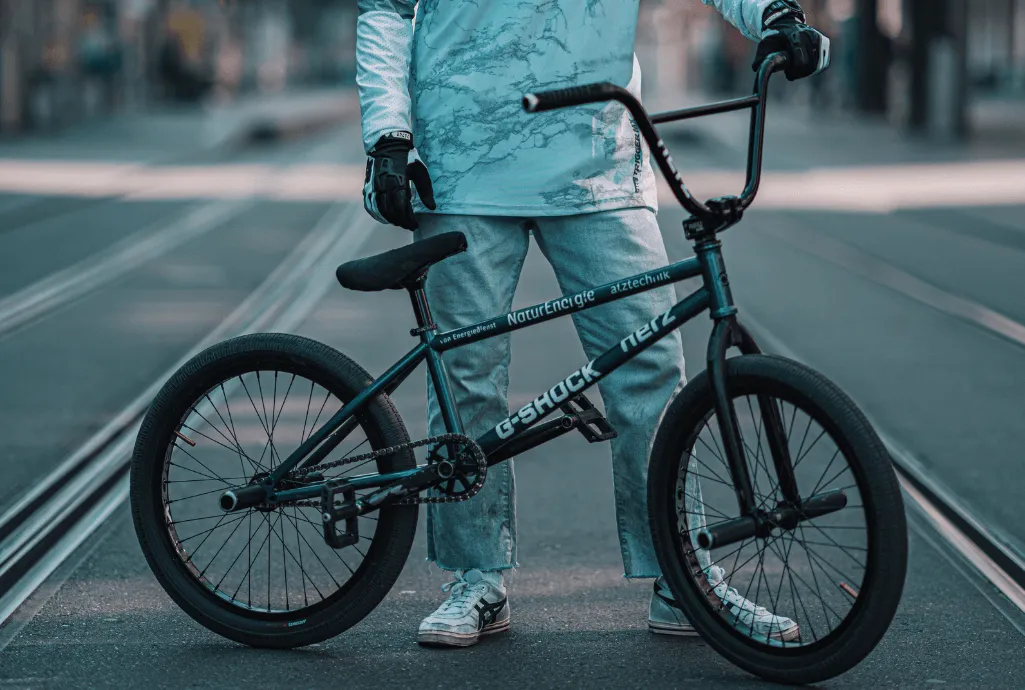- Pegs for bikes are accessories that can be attached for greater control, tricks, stunts or better looks. - You can put up to four pegs on any bike if you have the correct size and type of peg for your ride. - Installation is easy but follow directions to avoid damaging your bike. - Pegs can be removed anytime.
Bike pegs can be a great addition to your bike if you know what they’re for and how to use them properly. Think about bike pegs as accessories that you can attach that allow you to ride with greater stability, improve your BMX skills and make you look cool!
In this article, we’ll go over the basics of bike pegs and explain how you can use them to improve your cycling experience. Keep reading to learn more!

What are bike pegs used for?
Bike pegs can be used for various purposes, including tricks, stunts and general cycling. If you want to add pegs to your bike, choose the right type and install them safely to enjoy their benefits.
What are bike pegs made of?
There are several materials that pegs are made of:
- plastic pegs
- metal pegs
- aluminum alloy pegs
- steel pegs
- titanium pegs
Metal or plastic pegs for bikes are the most common ones. Some people like metal pegs because of their durability while others prefer plastic ones as they don’t add any extra weight.
They come in various sizes and shapes, but the most common type is the peg with a cylindrical axle that screws into the bike frame.
The axle size and length of the peg will vary depending on your bike type. Most pegs range from 8 to 12 millimeters in diameter and can be up to 200 millimeters long. Make sure to measure the diameter and length of your bike’s axle before purchasing pegs to ensure a proper fit.
Can you put pegs on any bike?
You can put up to four pegs on any bike if you have the correct size and type of peg for your ride. Before purchasing pegs, measure the diameter and length of your bike’s axle to ensure a proper fit. If you need help deciding which type of peg to buy, consult a cycling expert at the nearest bike shop to find the best option.

BMX pegs and what are they used for?
Bike pegs can be a great addition to BMX bikes if you know what they’re for and how to use them properly.
BMX bike pegs can be used for various purposes, including tricks, stunts and general cycling (foot pegs). If you want to add bicycle pegs, choose the right type and install them safely to enjoy their benefits.
There are a variety of tricks that you can do with pegs on your BMX bike. Here are a few of the most common tricks:
– Double peg grind: This is a basic trick where you ride your bike over pegs and slide your foot along the peg to maintain balance.
– Double peg stall: This is a more advanced trick where you stop your bike by putting all your weight on the pegs.
– Peg wheelie: This is a trick where you lift the front wheel of your bike off the ground by using the pegs for leverage.
– Peg Chinger: This dangerous trick involves flipping your bike backward over the pegs. Make sure to practice at a safe location before attempting this trick.
These are just a few tricks you can do with pegs on your BMX bike. For more information on how to do these tricks and others, watch online tutorials or consult with professionals.
Here are some BMX professionals that you can get inspired by – Ryan Nyquist and Mat Hoffman.

How to install bike pegs?
Installing bike pegs can be a relatively easy process. Still, it’s important to take your time and follow the correct steps to avoid accidents or damage to your bike.
Here are a few tips on how to install pegs safely and securely:
1. Choose the right pegs for your bike. As we mentioned earlier, a variety of pegs are available on the market.
The size and type of peg will depend on the make and model of your bicycle.
2. Make sure that the pegs are compatible with your bike frame. Most pegs have an axle that screws into the frame, so you’ll need to ensure that your bike has compatible threads.
If you’re unsure, check with the manufacturer or local bike shop before making a purchase.
3. Locate a clean and smooth surface on which to install the pegs. The pegs should be installed on a solid surface to support your weight. Avoid installing them near sharp objects or other hazards that could cause harm while cycling.
4. Carefully measure the diameter and length of the axle before drilling into your frame. This is important to ensure a proper fit and avoid damaging your bike frame.
5. Drill a hole in the frame of your bike where you want the pegs to go using a drill bit slightly smaller than the diameter of the peg axle.
It’s important to be careful when drilling into your bike frame, as you can easily damage it if you’re not careful.
6. Insert the peg axle into the drilled hole and secure it in place by tightening the nut at the end with a wrench. Do not over-tighten, as this can damage both the peg and your bike’s frame.
7. Test out your new pegs by cycling around on them cautiously at first until you get used to them. Be aware of how much weight they can support, and use caution when performing tricks or stunts.
How to take the bike pegs off?
Taking bike pegs off is easy and quite straightforward. Here are a few tips on how to take pegs off safely and securely:
1. Locate the nut at the end of the peg axle and use a wrench to loosen it.
2. Carefully pull the peg axle out of the drilled hole in your frame.
3. Tighten the nut on the peg axle before storing the pegs in a safe place.
Where to buy pegs for bikes?
You can purchase bike pegs in various places, including online retailers like Amazon or local bike shops. We recommend doing your own research before purchasing to ensure you get the best possible quality and price.
Conclusion
Bike pegs can be a great way to improve your cycling experience, allowing you to do tricks and stunts with ease.
Before purchasing pegs, measure the diameter and length of your bike’s axle to ensure a proper fit. Installation is relatively easy, but it’s important to take time and follow the correct steps to avoid accidents or damage to your bike frame. When taking the pegs off, be careful not to damage your bike.
Not sure what is BMX bike or whether it’s right for you? Read our article about 21 different bike types.

